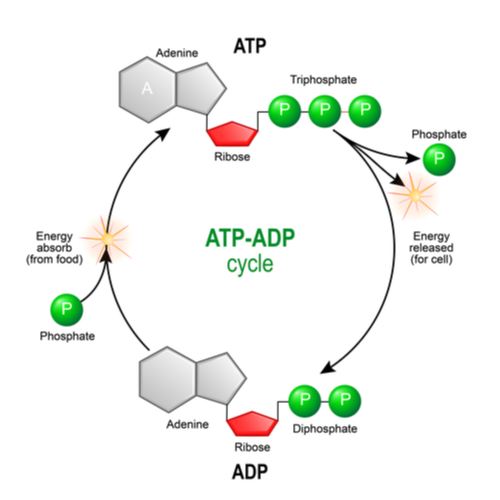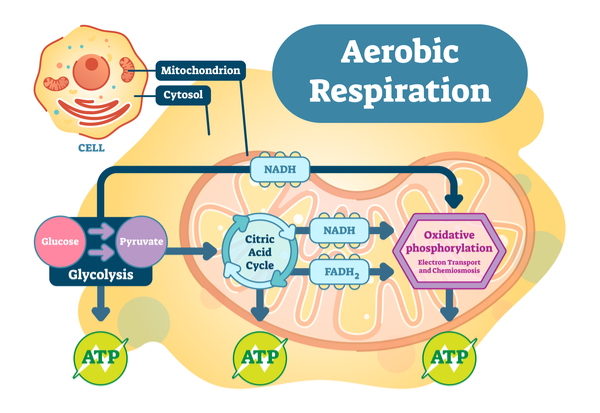Phosphorylation Basics
Phosphorylation Definition
Phosphorylation is the addition of a phosphoryl (PO3) group to a molecule. In biological systems, this reaction is vital for the cellular storage and transfer of free energy using energy carrier molecules. Adenosine 5’-triphosphate (ATP), the most abundant energy carrier molecule, has two high-energy phosphate‑phosphate bonds that can be broken to release free energy when the cell needs it to power various cellular processes. Likewise, excess free energy can be used to power the synthesis of ATP via the phosphorylation of adenosine 5’-diphosphate (ADP), effectively storing it as chemical energy for later use. The conversion of ADP to ATP can occur through two kinds of phosphorylation: oxidative phosphorylation and substrate-level phosphorylation. The primary difference between these two processes lies in the source of the free energy used to drive phosphorylation.
What is Oxidative Phosphorylation?
During oxidative phosphorylation, energy released during the oxidation of nutrients by enzymes is used to drive energy-requiring phosphorylation reactions (i.e. oxidation and phosphorylation are coupled). Energy is captured as electrons are transferred from electron donors to electron acceptors, such as oxygen, in a series of reduction-oxidation (redox) reactions. This energy is ultimately used to power an ATP-synthesizing enzyme called ATP synthase through a process called electron transport. Oxidative phosphorylation is highly efficient, but only occurs under aerobic conditions.
What is Substrate Level Phosphorylation?
Unlike oxidative phosphorylation, substrate-level phosphorylation does not couple phosphorylation with oxidation; rather, the free energy required for phosphorylation is provided by the chemical energy released when a higher energy substrate is converted into a lower energy product. Substrate-level phosphorylation occurs in the cytoplasm of cells (glycolysis) and in the mitochondria (Krebs cycle). It can occur under both aerobic and anaerobic conditions and provides a quicker, but less efficient source of ATP compared to oxidative phosphorylation.

Diagram featuring the ATP-ADP Cycle in substrate level phosphorylation.
Phosphorylation in Aerobic Respiration
The diagram below demonstrates oxidative phosphorylation and substrate level phosphorolation in aerobic respiration.

The illustration demonstrates oxidative phosphorylation and substrate level phosphorylation in aerobic respiration.
To continue reading please sign in or create an account.
Don't Have An Account?